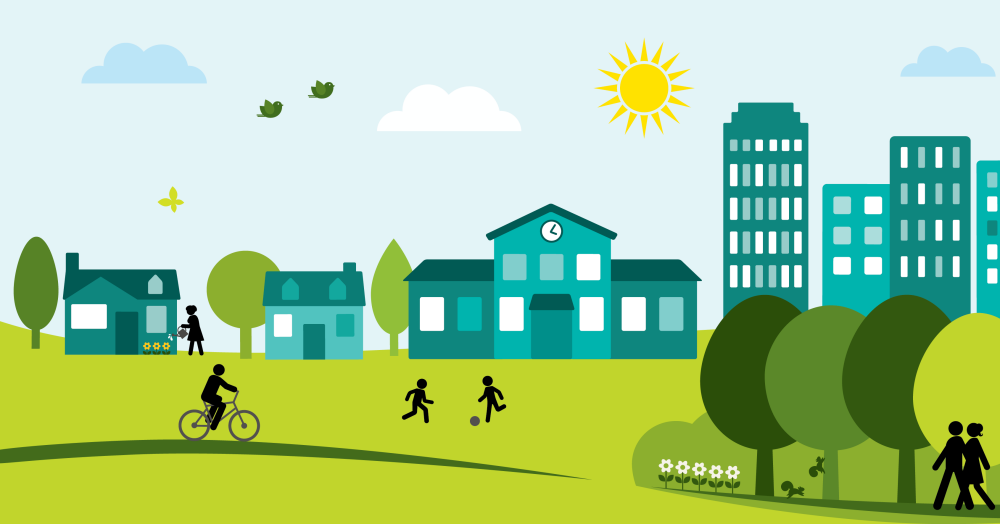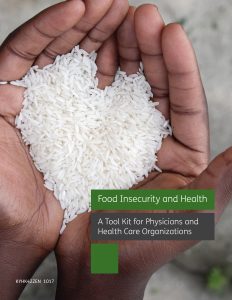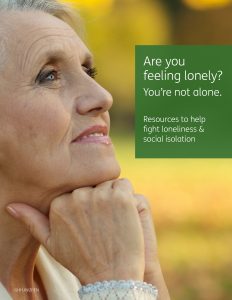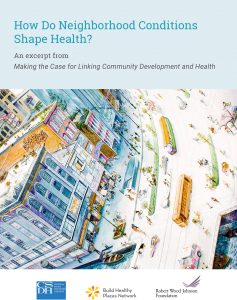Food / Nutrition
A Marriage between Medicaid and Public Health: A Q&A on Partnering for Prevention
 Credit: see source link below
Public Health: “Why can’t Medicaid pay for our stuff, haven’t they seen that it is evidence-based and will save money?”
Medicaid: “Why does everyone ask us to pay for their stuff?”
Like anyone in a happy marriage knows, it is invaluable to see the world through your partner’s lens. As the health care system undergoes significant transformation, many stakeholders and policymakers — including Medicaid and public health representatives — are seeking to change how they have traditionally worked by forging new partnerships, breaking down silos, and . . . seeing the world through each other’s lens.
With support from the Robert Wood Johnson Foundation, the Center for Health Care Strategies (CHCS) is partnering with the Centers for Disease Control and Prevention, as well as the Centers for Medicare & Medicaid Services, the Association of State and Territorial Health Officials (ASTHO), and the National Association of Medicaid Directors, and other partners to spur alignment to accelerate adoption of proven prevention strategies. Over the past three years, CDC’s 6|18 Initiative has supported Medicaid-public health partnerships in 34 states, local jurisdictions, and territories across the United States to accelerate adoption of proven prevention strategies.
Click here to read the full article.
Credit: see source link below
Public Health: “Why can’t Medicaid pay for our stuff, haven’t they seen that it is evidence-based and will save money?”
Medicaid: “Why does everyone ask us to pay for their stuff?”
Like anyone in a happy marriage knows, it is invaluable to see the world through your partner’s lens. As the health care system undergoes significant transformation, many stakeholders and policymakers — including Medicaid and public health representatives — are seeking to change how they have traditionally worked by forging new partnerships, breaking down silos, and . . . seeing the world through each other’s lens.
With support from the Robert Wood Johnson Foundation, the Center for Health Care Strategies (CHCS) is partnering with the Centers for Disease Control and Prevention, as well as the Centers for Medicare & Medicaid Services, the Association of State and Territorial Health Officials (ASTHO), and the National Association of Medicaid Directors, and other partners to spur alignment to accelerate adoption of proven prevention strategies. Over the past three years, CDC’s 6|18 Initiative has supported Medicaid-public health partnerships in 34 states, local jurisdictions, and territories across the United States to accelerate adoption of proven prevention strategies.
Click here to read the full article.
Community Development Can Improve Resident Health

Credit: see source link below
The Pittsburgh Hill/Homewood Research on Neighborhoods and Health (PHRESH) project is a unique study following residents and their changing environments in two similar, predominantly African-American, low-income neighborhoods in Pittsburgh, Pennsylvania. RAND researchers have examined how investments and neighborhood changes—a Healthy Food Financing Initiative-supported supermarket, mixed-income housing developments, and greenspace and park renovations—influence a range of health and economic outcomes. Here is what the study has found so far: Opening a new full-service supermarket improved residents’ diets and neighborhood satisfaction. In the Hill District neighborhood, once considered a “food desert”—where healthy food options were limited—a new supermarket opened. Homewood is a similar neighborhood a few miles away that continues to be a food desert. The research team followed randomly selected households in both neighborhoods to measure changes in diet and food shopping over time. Click here to read the full article. Read MoreToward an Initial Conceptual Framework to Assess Community Allostatic Load
Early Themes from Literature Review and Community Analyses on the Role of Cumulative Community Stress
Understanding extant stress levels within a community can help inform how it responds to acute or traumatic events. This report presents a concept of community allostatic load based on that of individual allostatic load — how stress, trauma, and adverse experiences can significantly affect individual health. The framework outlined in this report could be used to develop a concept for determining the allostatic load level of a community.
The goal is to use such a framework to help public health practitioners and other community leaders better explain, support, and mitigate stress levels community-wide and to work to create conditions that promote health and well-being. To push forward this new way of thinking about communities and stress, researchers at the RAND Corporation working with the Robert Wood Johnson Foundation developed an initial framework conceptualizing community allostatic load. While this work is formative and principally a proof of concept, the framework can help build a general appreciation of community stress for use by practitioners and policy leaders; offer new ways to measure community health and well-being; and support efforts by the Robert Wood Johnson Foundation to better consider community stress in the context of health equity and to create a framework that contains drivers to build a healthier nation, known as the Culture of Health. Click here to read full article. Read MoreFood Insecurity and Health: A Tool Kit for Physicians and Health Care Organizations

Credit: see source link below
Introduction Food insecurity is an important but often overlooked factor affecting the health of a significant segment of the American population. In the United States, 1 in 8 people struggles with hunger and no one can thrive on an empty stomach. To raise awareness and to offer suggestions for how health care professionals might treat food insecurity in their patients, Humana partnered with Feeding America, the largest domestic hunger-relief charity in the United States, to develop this toolkit. We hope you find it informative and useful in your effort to provide the best possible care to your patients. Food insecurity is defined by the U.S. Department of Agriculture (USDA) as “limited or uncertain availability of nutritionally adequate and safe foods or limited or uncertain ability to acquire acceptable foods in socially acceptable ways.” Food insecurity is a situation in which households lack access to enough nutritious food for a healthy, active life. As the health care sector seeks to better understand and address social determinants of health, food insecurity is emerging as a key factor for chronic disease – and one that health care providers can help address in order to improve health outcomes. Click here to read full article. Read MoreAre you feeling lonely? You’re not alone. Resources to help fight loneliness & social isolation

Credit: see source link below
Loneliness is a feeling of sadness or distress about being by ourselves, or feeling disconnected from the world around us. It may become stronger over time, and it’s possible to feel lonely even when surrounded by those you cherish most. Loneliness can happen when we feel like we don’t have a sense of belonging, meaningful social engagement, or connection to networks like our neighbors or other friend groups. But it can also happen when we have full lives and are only missing some of those things, or even just one person. Loneliness is a common emotion, and it is likely that at some point in our lives and whatever our age we will experience it. Social isolation is when we’re physically separated from other people. Sometimes this occurs because of life situations, like recovering from surgery, having children who live far away, being busy taking care of someone we love, or the fact that getting older makes it too hard to drive. It can also occur when we lose groups of friends or loved ones, or if getting out of the house just seems like too much effort.
We all need the support of others to make us feel understood and to help us feel like we’re making an impact on the world. Without these bonds, it’s natural to feel defeated or frustrated. It can also be tempting to brush away these feelings because we think they’re silly. But please know that you’re not alone. Did you know that some version of loneliness impacts up to 43 percent of older adults? And remember, it can be caused by a wide range of issues, like grief or loss, the inability to be as active as you used to, friends moving away, children growing up, losing a pet, medical conditions or surgery, or retirement. These feelings of social isolation and loneliness, especially among seniors, can actually have a significant impact on health. For example, they can lead to a 32 percent increase in risk of stroke. We hope you find resources in this toolkit that can help. Click here to read the full article. Read MoreUrban Institute

Credit: see source link below
Racial and ethnic inequalities loom large in American society. People of color face structural barriers when it comes to securing quality housing, healthcare, employment, and education. Racial disparities also permeate the criminal justice system in the United States and undermine its effectiveness. At the Urban Institute, we examine how historical and ongoing public policies, institutional practices, and cultural narratives perpetuate racial inequalities and constrain mobility for communities of color. For decades, our researchers have called attention to the role of race and racism in our public and private institutions and offered evidence-based solutions for how to address these inequities. And now, as events in Charlotte, Baton Rouge, Ferguson, and Baltimore have sparked a new round of national debate, our scholars continue to play a crucial role as we work to elevate the public discourse around race and inequality in America. Click here to read full article. Read MoreRedesigning New York's Medicaid Program
On April 14, 2014, Governor Andrew M. Cuomo announced that New York has finalized terms and conditions with the federal government for a groundbreaking waiver that will allow the state to reinvest $8 billion in federal savings generated by Medicaid Redesign Team (MRT) reforms. The MRT waiver amendment will transform the state's health care system, bend the Medicaid cost curve, and ensure access to quality care for all Medicaid members. The Medicaid 1115 waiver amendment will enable New York to fully implement the MRT action plan, facilitate innovation, lower health care costs over the long term, and save scores of essential safety net providers from financial ruin. The waiver allows the state to reinvest over a five-year period $8 billion of the $17.1 billion in federal savings generated by MRT reforms. The waiver amendment dollars will address critical issues throughout the state and allow for comprehensive reform through a Delivery System Reform Incentive Payment (DSRIP) program. The DSRIP program will promote community-level collaborations and focus on system reform, specifically a goal to achieve a 25 percent reduction in avoidable hospital use over five years. Safety net providers will be required to collaborate to implement innovative projects focusing on system transformation, clinical improvement and population health improvement. Single providers will be ineligible to apply. All DSRIP funds will be based on performance linked to achievement of project milestones. Public comment on the MRT waiver amendment will be solicited through the MRT website, webinars and public hearings to take place over the next several weeks. Additional information, including the waiver special terms and conditions, list of eligible safety net providers, descriptions of eligible projects, and other overview documents are available at the DSRIP link below. Click here to read the full article.
Read MoreHow Do Neighborhood Conditions Shape Health? An excerpt from Making the Case for Linking Community Development and Health

